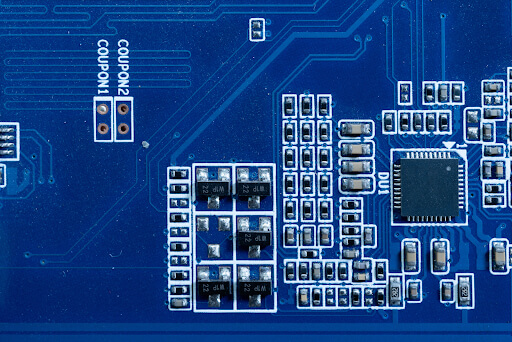Microservices Architecture And Its Benefits.

Introduction
Mobile computing has taken the world by storm in recent years, and developers are constantly seeking ways to keep pace with its lightning-fast evolution. The need for quick action and easy adaptation has given rise to Microservices Architecture, a revolutionary approach to application development. With this cutting-edge concept, developers can change applications on the fly without needing full-scale redeployment.
What Is Microservices Architecture?
Microservices architecture is a variant of service-oriented architecture structural style. The software development approach aims to break down an application into small and independent services.
These independent services can be used and managed independently without depending on other applications. Each service in Microservices architecture performs a specific function and, when required, communicates with other services using lightweight protocols such as HTTP or RESTful APIs.
Data storage, processing, and presentation – every service in Microservices Architecture independently performs all these functions. Every service of Microservices Architecture uses a different programming language. Even the database and technology stack of that service is entirely different from others, and this helps organizations utilize the best tool for each specific task.

Microservices architecture is often associated with a monolithic architecture, in which the application is developed as a single, large, and tightly coupled unit.
Microservices architecture offers several benefits, including scalability, flexibility, resilience, and easier maintenance. This blog is a guide to understanding these benefits and why it has become an increasingly popular approach to building software applications.
Benefits of Microservices Architecture
Among the numerous benefits Microservices architecture provides in product engineering, here we mention a few.
- Scalability and Flexibility
Scalability and flexibility go hand in hand. You can independently scale each service depending on the requirements. This way, consumers’ demands matter for an organization since you can quickly add or remove resources based on their demands.
Businesses don’t have to scale the services they don’t need. It makes it easier for such companies to handle high-traffic loads and saves them some extra time.
Another advantage that microservices architecture offers is flexibility. Developmental processes may require a single service to be developed and deployed. So instead of creating an entire application, you can set and use Microservices, which can be managed independently. This adds greater flexibility to the development process.
- Improved Resilience and Fault Isolation
In a monolithic application, the failure of one system component can affect the entire application. However, with microservices architecture, if a single service fails, you don’t have to worry about the failure of other applications as it does not affect the rest of the applications.
This is because each service in this system is designed to be independent of the others, which means the application can function even if the other services are no longer operating.
- Increased Agility and Innovation
Microservices architecture has benefited organizations and firms by making them more agile and ingenious. Businesses and organizations can always experiment with new, innovative ideas with microservices. This is because they know that if changes are made in one service, they do not impact the entire application.
Therefore, organizations can now iterate faster and bring new innovative features to market more quickly.
Additionally, microservices architecture has encouraged businesses to adopt a DevOps approach to software development. Such an agile and reliable approach allows for greater and more successful collaboration between developers and operations teams. This also allows for fast code development and easy incorporation of feedback.

- Easier Maintenance and Upgrades
Microservices architecture has made maintenance and upgrades a piece of the cake. You can now update individual services without worrying about their effect on the rest of the application.
This allows you to edit a particular system and makes keeping the desired applications and services up-to-date and well-maintained easier. It also reduces the risk of downtime during upgrades.
- Improved Scalability and Performance
You can now improve an application’s scalability and performance thanks to Microservices Architecture. Since every service can be scaled independently, dealing with high-traffic loads has become more manageable. This helps you improve the overall performance of the application. Besides, microservices architecture can enhance the responsiveness of an application, as services can be optimized for specific tasks.
- Easier Integration with Third-Party Services
Last but not least, microservices architecture has made it a lot easier to integrate third-party services into an application. Each service can be specifically designed according to the need to communicate with third-party services using lightweight protocols such as HTTP or RESTful APIs, making it easier to integrate with other systems.
Conclusion
In short, Microservices architecture is no less than a blessing for developers who have been facing several challenges with traditional monolithic solutions. Microservices architecture is a modern approach to product development that brings numerous benefits to organizations of all sizes and types.
![Blog-[x]cube LABS](https://d6fiz9tmzg8gn.cloudfront.net/wp-content/uploads/2016/06/blog_banner.jpg)






